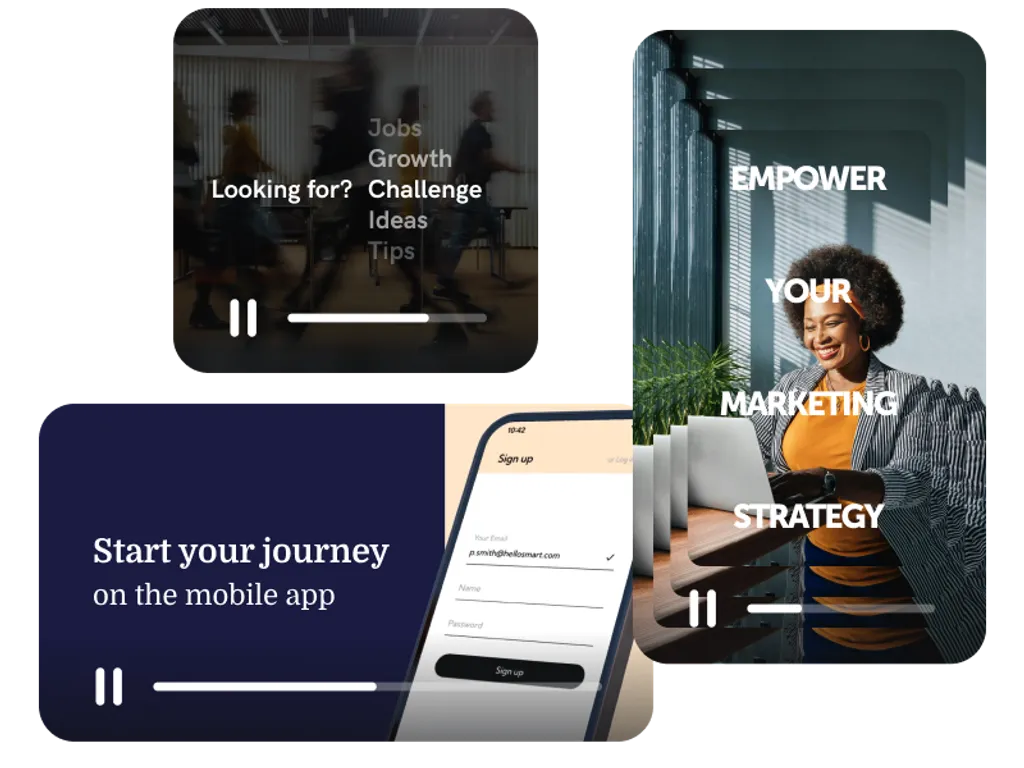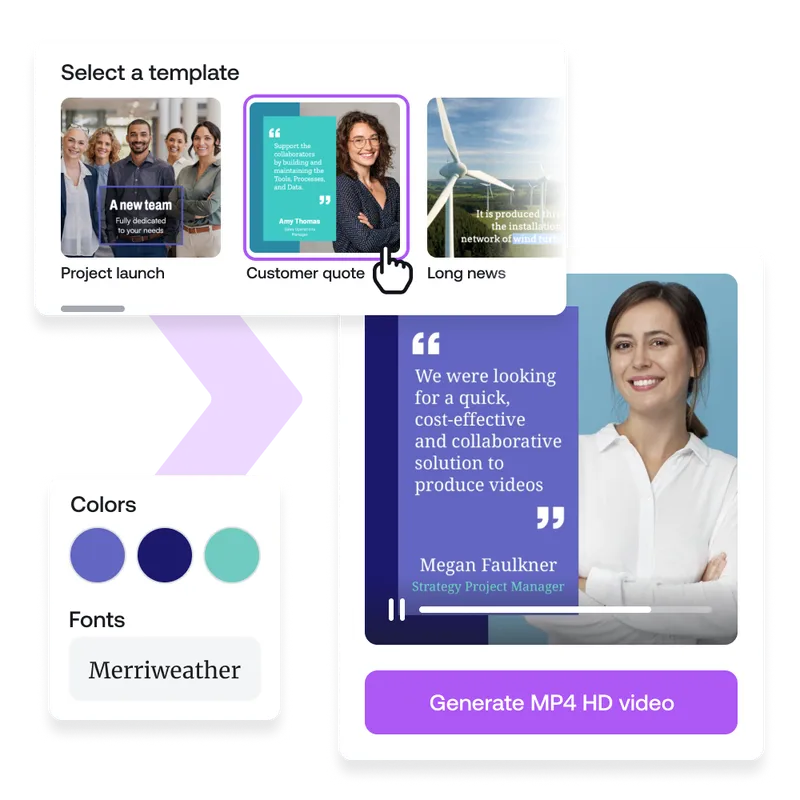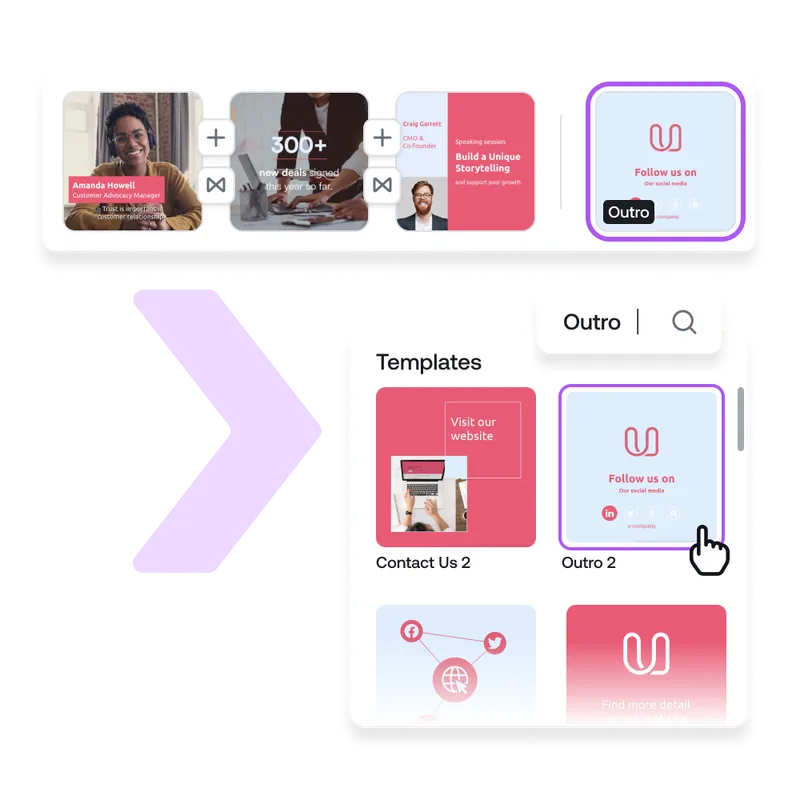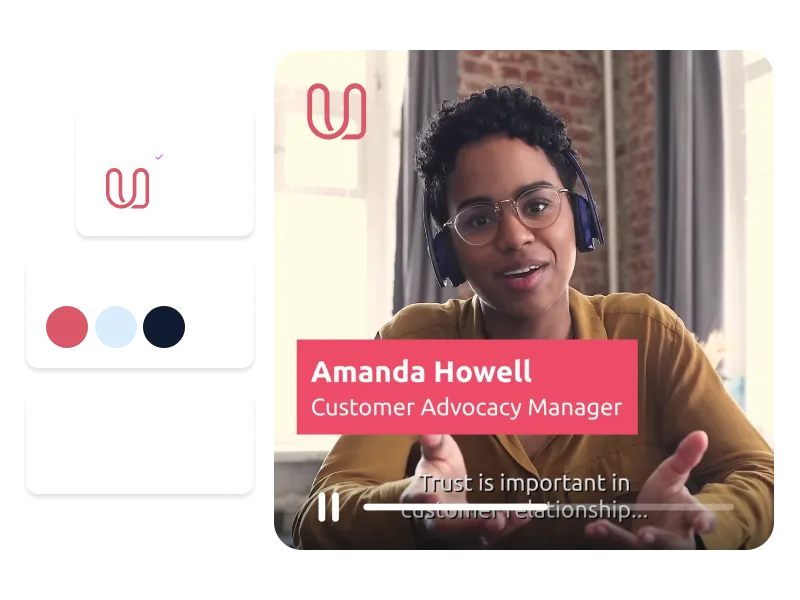Create Stunning Commercial Videos - Memorable, Fast & Online
Not a video production expert? No problem! Create sales-driven commercial videos in minutes with PlayPlay’s intuitive video maker.

Create Powerful Commercial Videos in Less than 15 Minutes!
Tell a compelling story, include a strong CTA and add your branding to your videos in one platform. Are you ready to create commercials that convert?
Our Engaging Commercial Video Templates
Engage your audience with our trendy commercial video templates.
How to make a commercial video
1
Upload your videos
Log in to PlayPlay and upload your video clips and other media. Majority of files are accepted including: MP4, MOV, MKV, MPG, and more.
2
Select a video template
3
Edit your video
4
Drive Action with a powerful CTA
5
Share it with your audience
Create Commercial Videos like a Professional
You no longer need a video production company to create professional-looking commercial videos. With PlayPlay you have full access to millions of stock images, videos and other media to enhance your commercials. We grant our users access to assets tat are bound to match the themes of your message. Our easy-to-use video editing software enables all marketing professionals to create unique content in minutes with customizable templates, transitions, subtitles, and more in minutes.
Hit Sales Targets with Powerful Video Outros
Turn your commercial videos into sale-generating machines with powerful outros. Whether you’re looking to increase viewers' engagement, secure content downloads, or convert – PlayPlay has you covered. With access to a wide-range of editable call-to-action video templates your commercials are guaranteed to leave a lasting impression to potential customers, drive revenue and ultimately achieve your goals.
Stay Recognizable by Matching Your Brand
Brand your videos instantly with PlayPlay’s branding feature. Upload your logos, colors and fonts onto our platform and set your preferences. Once set, your branding will automatically generate for each video no matter who’s in charge of your content creation projects. Now, you can publish your commercials with a peace of mind that your audience will instantly recognize your brand and high-quality products.
Communicate with video
Speak directly to your audience with video. PlayPlay’s intuitive video creation platform enables marketing and communication teams to turn any message into a memorable video with ease. No previous editing experience needed.
Start your freetrial nowFrequently Asked Questions
Have questions? We’re here to help.
What is a commercial maker?
How can I make a free commercial?
In addition to producing the video, there are plenty of avenues to freely distribute your video ad too, such as social media platforms like YouTube.
How can I make a commercial for my business?
Here are several tips and steps in order to make a compelling commercial for your business:
- Define your goals : What do you want to achieve ? Brand awareness, boosting sales, conveying a specific message
- Know your audience : The more you know about consumers, the more you can shape your video creation to resonate with them.
- Craft a captivating story : Start with a hook to grab your viewers’ attention, engage them emotionally throughout the video and end with a strong call to action.
- Design a storyboard : Develop a storyboard that aligns with your strategy and your audience’s preferences.
- Film and edit your video : You can invest in good equipment with proper lighting and sound but no need to hire professionals to edit your commercial ! Thanks to PlayPlay, you can create a commercial that will leave a lasting impression on your audience. You can benefit from a variety of features to energize your content, add music, voice-over and subtitles. Don’t forget to include a clear and compelling call-to-action for your viewers.
What app can I use to make a commercial?













